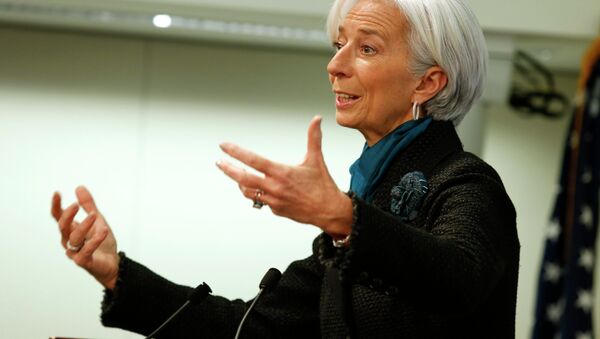Andre Alessandro — On Tuesday, the leaders of Europe, Ukraine and Russia concluded a grueling 17-hour negotiation settlement, arriving at a ceasefire. The concessions by either side were paltry, there was no reconciliation given to the status of Luhansk and Donetsk and the agreement solves nothing in the long term politically. The benefit of the agreement is that it does provide a short term solution for both parties and will hopefully ease some of the pressure the West has placed on Russia.
More importantly, in a quiet move, the IMF announced that it would provide a four year $17.5 billion dollar extended fund facility to Ukraine. The move comes as Ukraine is in the midst of what Bloomberg reported as its “deepest recession since 2009, foreign reserves at an 11-year low and the world’s worst-performing currency.” This is the second IMF package to be delivered to Ukraine, with a similar $17 bn loan provided in 2014. The purpose of the loan is to keep Ukraine from default and introduce reforms in the governmental and financial sector.
According to IMF Managing Director Christine Legarde, “This new program offers an important opportunity for Ukraine to move its economy forward at a critical moment in the country's history.'' The moment being the newly agreed upon ceasefire, with the hope being that everyone lays down their guns, picks up their tools and skips off into the happy future to rebuild Ukraine as a symbol of Western ideals and harmony.
Unfortunately, the Ukrainian government has no legs to stand on. In January 2015, foreign reserves dropped to record lows of $6.4 bn and gold reserves in the country are at less than %1. The disappearance of Ukraine's gold reserves is especially troubling, as no one can readily explain where it went. It literally was carted out of the country at some point last year and replaced with gold painted lead bricks. No explanation has yet been given so far as to where 21 tons of gold sauntered off to. Maybe to Miami for a vacation in the sun or Brussels for a cold beer, but both the US Fed and the ECB has denied any involvement or knowledge of its disappearance. However, while the IMF has denied Ukraine loans in the past, they were approved for financial assistance after the disappearance in 2014.
Even if the missing gold reserves have nothing to do with the IMF loan, in the year since the first bailout, the Ukrainian hryvnia lost more than 75% of its value. Most of this depreciation occurred when the currency lost 30% of its value after the government decided to let it free float in January 2015. The IMF's goals are austerity and reform, but this has come at the expense of its citizens wealth. The hard earned savings of normal hard working people were destroyed and the currency is near worthless now. Obviously the IMF is doing its job right.
In 2015, Ukraine has over $11 billion in debt obligations, the majority of which is to Russia for gas payments. Most of the loans provided to Ukraine will cover the cost of keeping Russian gas on. This “independent” bank is essentially buying off Russia's leverage against Ukraine in the winter time months and funding the ongoing conflict in the East.
What this latest bailout is part of the Wests struggle to draw Ukraine away from Russia. Its almost funny to see Europe's leader's standing proud together with a weak ceasefire agreement, as the IMF pumps more money into the failed banks and their corrupt government. The IMF, the EU, and the US are drawing the battle lines slowly. Whether Europe and Russia are on the brink of another Cold War, it is too early to tell. But in eerie fashion, 25 years after the fall of the Berlin Wall, Ukraine is planning to erect its own border wall.
What Ukraine needs is a sustained peace that includes the influence of Russia. The country has always been a buffer between East and west and it should remain that way. Both Europe, America, and Russia must come together to find a solution that will actually benefit and unite the Ukrainian people rather than arming and separating them.

